 Melissa Anderson
Melissa Anderson
A man, a plan, a novel, Marilyn: Andrew Dominik’s film adaptation takes Joyce Carol Oates’s 2000 book to a sordid nadir.
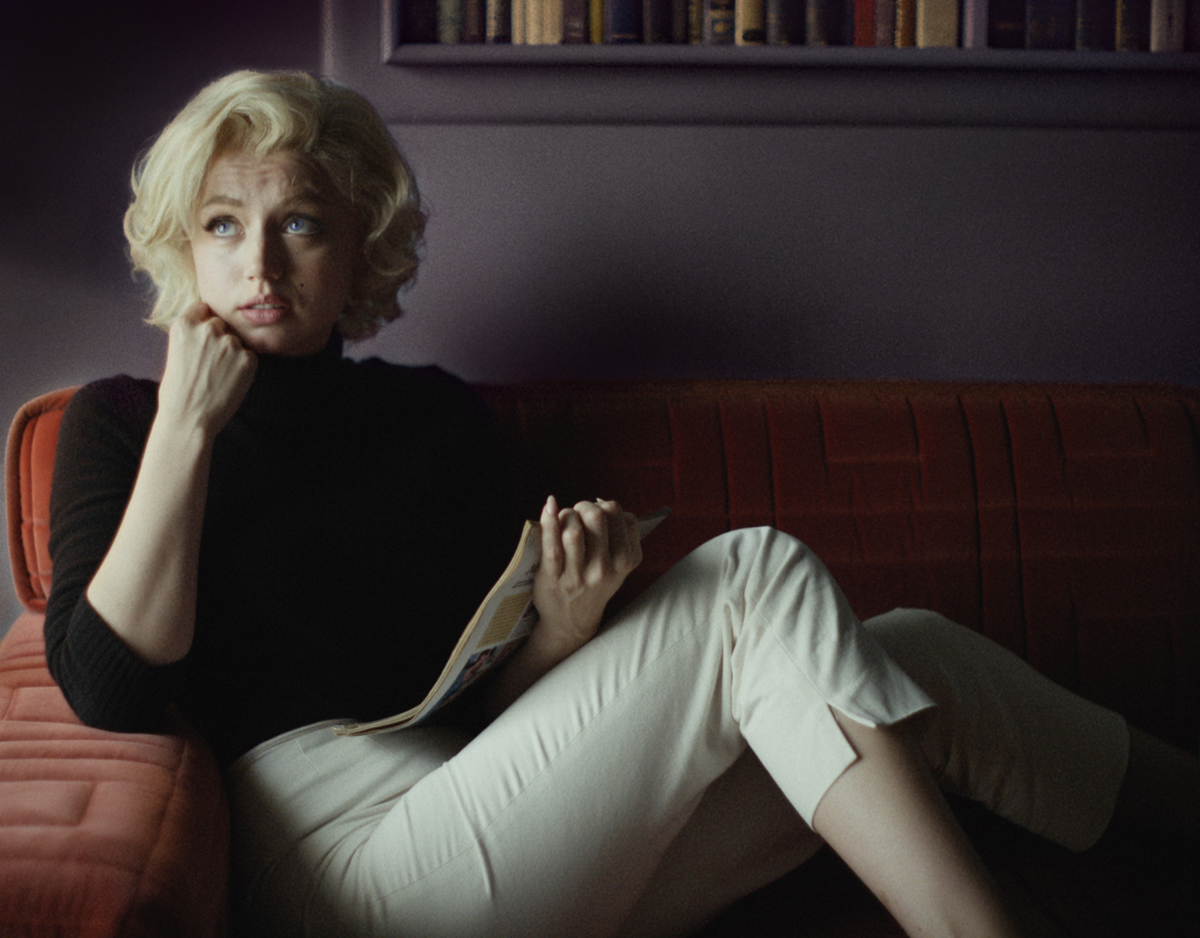
Ana de Armas as Marilyn Monroe in Blonde. Courtesy Netflix.
Blonde, written and directed by Andrew Dominik, now playing in select theaters and streaming on Netflix
• • •
No corpse has been picked over more than Marilyn Monroe’s. In the sixty years since her death, in 1962—at age thirty-six, an apparent suicide—the screen legend has been the subject of not just scores of books and movies but also plays and operas. “Monroe was an infinity of character and mystery that was impossible for me, or anyone else, to explore, because it was so vast. There is always more and more and more,” in the words of Maurice Zolotow, the first of her legions of biographers (who also include Norman Mailer and Gloria Steinem).
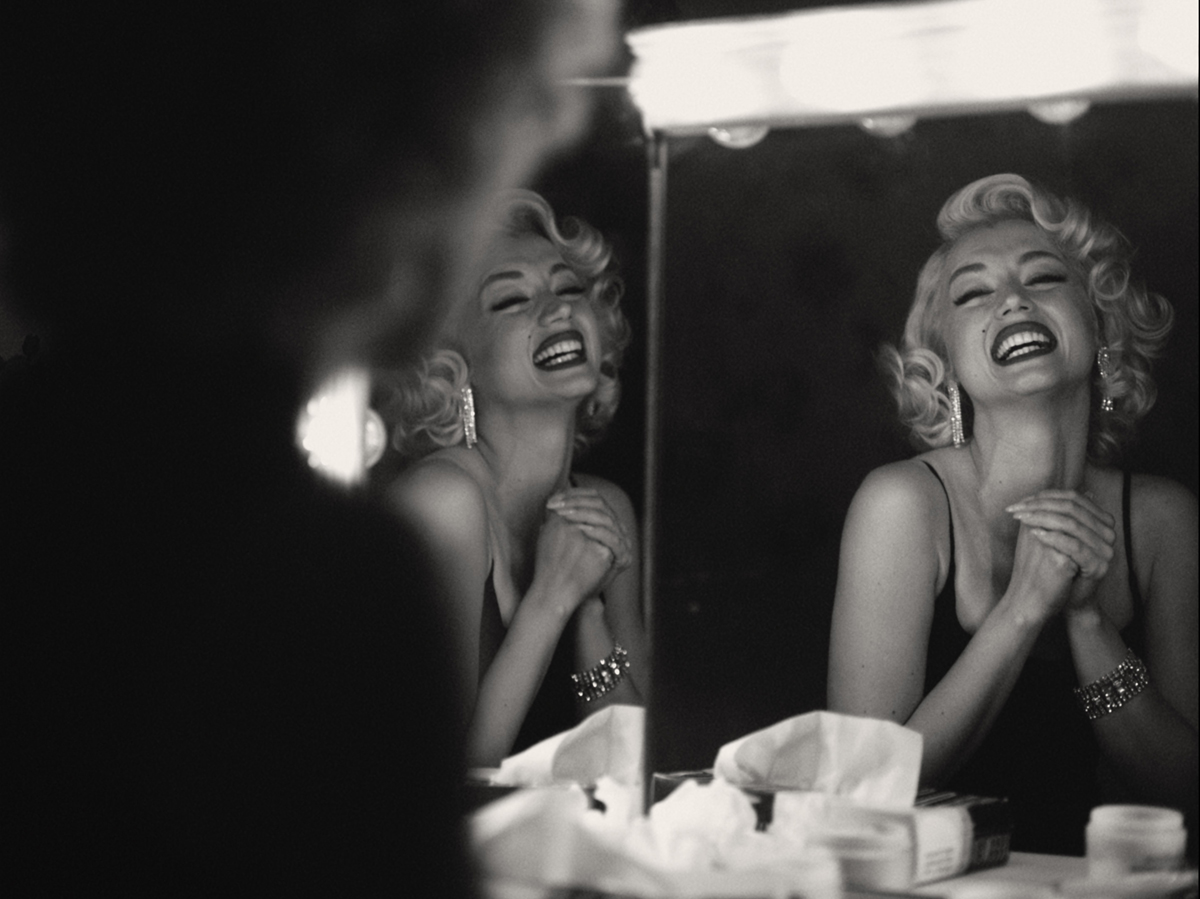
Ana de Armas as Marilyn Monroe in Blonde. Courtesy Netflix.
More and more and more. Ushering Monroe studies into the new millennium, Joyce Carol Oates’s immoderate, turbid, lurid novel Blonde, published in 2000, is a fictionalized psychobiography of the actress. Several real events and people, both major and minor, in the icon’s difficult, abbreviated life provide the scaffolding for this thick tome, though Oates condenses and invents many others. Points of view shift frequently; excitable typefaces (italics, all caps, small caps) and punctuation marks (exclamation points, scare quotes) abound. All undergird the book’s unwavering high-gothic tone, typified by passages such as “The secret place between her legs had been rent and bloodied and claimed by the Dark Prince.” That is just one of an infinite number of degradations, whether actual or embellished or wholly imagined by Oates, that constitute the bulk of her book, the central tragedy of which is the irreconcilable schism between the protagonist’s two selves: the woman who entered the world, in abject circumstances, as Norma Jeane Mortensen in 1926 and the actress / erotic fantasy rechristened Marilyn Monroe by Twentieth-Century Fox in 1946.
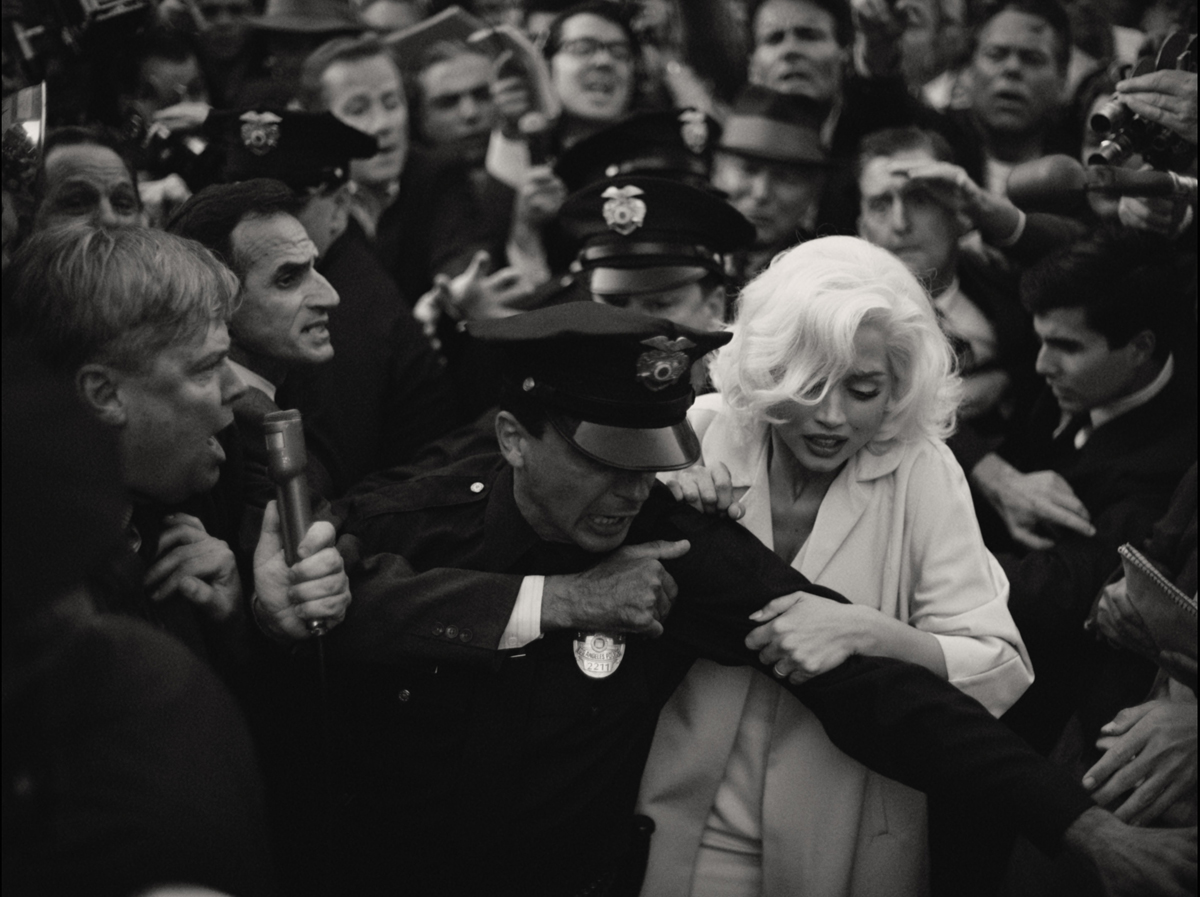
Ana de Armas as Marilyn Monroe in Blonde. Courtesy Netflix.
Yet no matter how feverish and frenzied, Oates’s book often surprises with astute maxims: “Genius has no need of technique”; “There’s a curse on the actor, always you are seeking an audience. And when the audience sees your hunger it’s like smelling blood. Their cruelty begins.” Undeniably, her heroine suffers. But she also struggles, fights back, attempts to understand herself and ameliorate her misery. Andrew Dominik’s long-gestating adaptation of Oates’s novel closely adheres to (and sometimes amplifies) its Grand Guignol tone but largely elides its protagonist’s intricacies. His film, agitatedly switching from black-and-white to color and back again and constantly changing aspect ratios, is a sordid passion play garlanded with formal frippery, a florid, necrophilic epic that suggests Monroe was born for only one reason: to die.
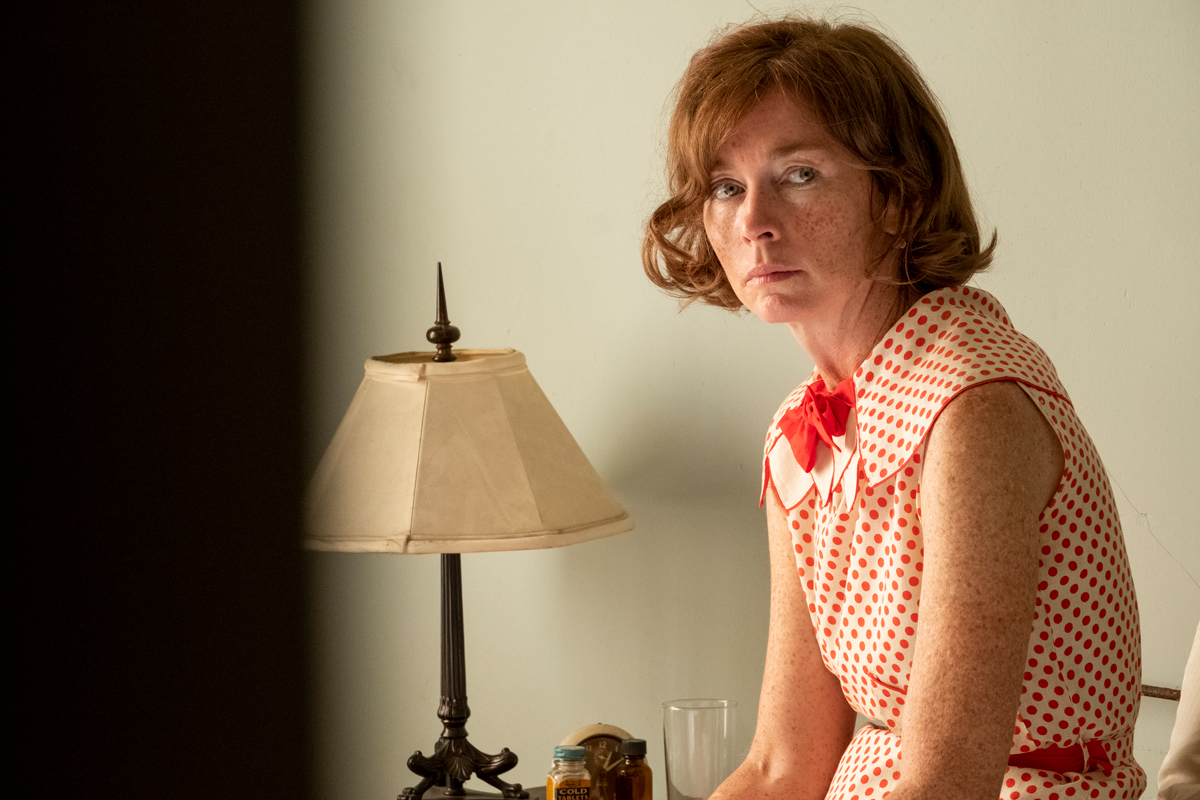
Julianne Nicholson as Gladys in Blonde. Courtesy Matt Kennedy / Netflix.
While a movie version (even one with an ample running time of almost three hours) of a book that’s more than seven hundred pages will obviously demand excisions, it’s telling that Dominik’s Blonde chops many of Oates’s chapters devoted to her subject’s childhood, adolescence, and early adulthood: the years when Norma Jeane, beset by tremendous difficulties but not yet encumbered by her screen name, endeavors mightily to figure out not only how to survive but to thrive. In the movie, however, one trauma quickly follows another. It opens with seven-year-old Norma Jeane (portrayed at this age by Lily Fisher) nearly killed by her mentally ill mother (Julianne Nicholson), who blames the child for driving away the man who fathered her. Following a brief montage of the magazine covers that featured the cheesecake poses of Norma Jeane, who began modeling in 1944, we follow the peroxided actress-hopeful—now incarnated by Ana de Armas—as she glides, the camera tight on her wiggling ass, into the office of a studio executive, who immediately rapes her.
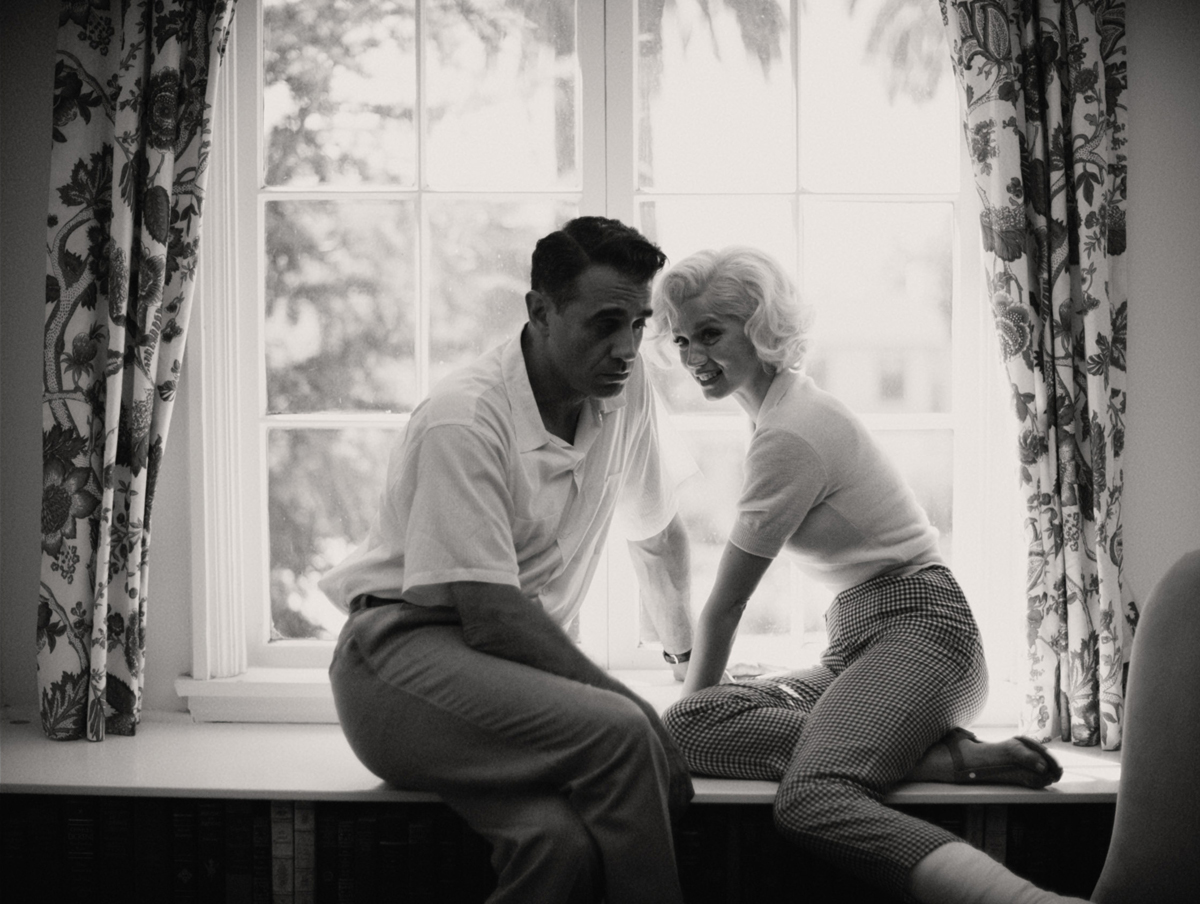
Bobby Cannavale as the Ex-Athlete and Ana de Armas as Marilyn Monroe in Blonde. Courtesy Netflix.
This reptilian movie mogul, played by David Warshofsky, is known as “Mr Z” in both the book and the film and is transparently a stand-in for Darryl F. Zanuck, the predatory head of Fox at the time. He is not the only man to victimize her. Her second husband, “the Ex-Athlete,” aka Joe DiMaggio (Bobby Cannavale), beats her and demands that she quit acting. Her third, “the Playwright,” alias Arthur Miller (Adrien Brody), lifts lines from their intimate conversations for his latest opus without telling her. Two Hollywood failsons (played by Xavier Samuel and Evan Williams) with whom Norma Jeane formed a pre-stardom throuple carry out a ruse of savage psychological cruelty.
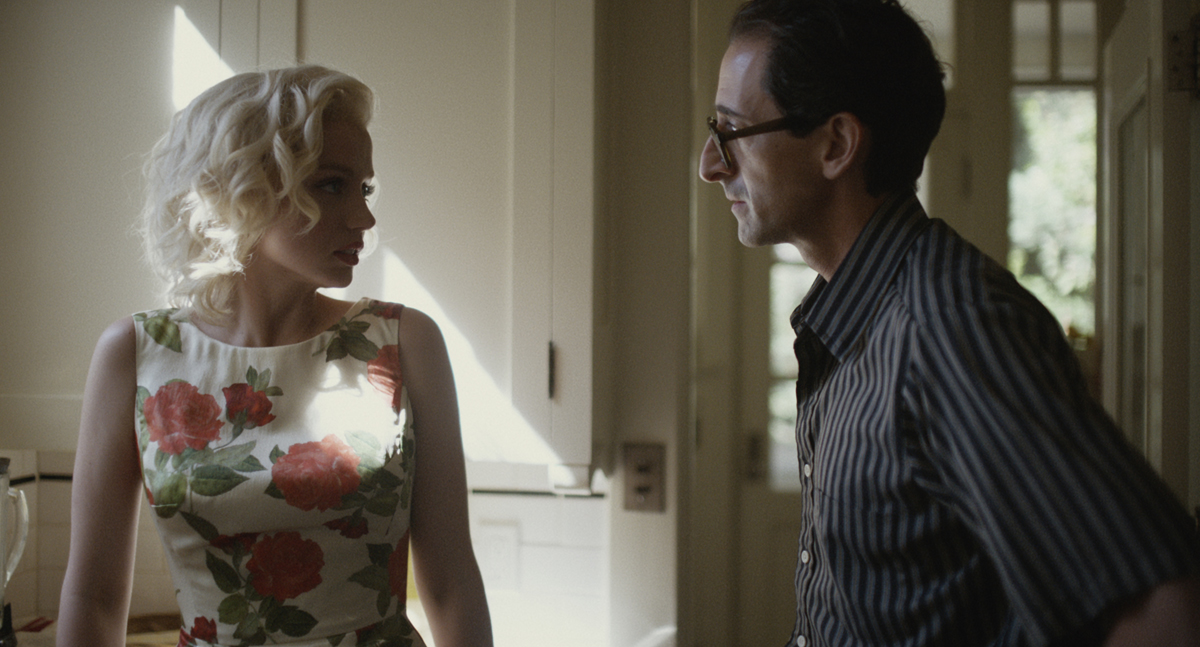
Ana de Armas as Marilyn Monroe and Adrien Brody as the Playwright in Blonde. Courtesy Netflix.
Tasked with the formidable challenges of not only enacting nonstop suffering but also inhabiting one of pop culture’s most enduring idols, de Armas, best known for the 2019 whodunit Knives Out and last year’s James Bond installment No Time to Die, eerily recalls Monroe (even if her Cuban accent hasn’t been entirely filed down and her slender frame doesn’t quite summon Monroe’s voluptuous proportions). And yet there’s something animatronic (Anamatronic?) about her performance, just one part of the hollow verisimilitude of Blonde, which fastidiously re-creates trailers for various Monroe vehicles (like 1953’s Niagara) and snippets of her most indelible scenes, like the “Diamonds Are a Girl’s Best Friend” number from the ’53 musical Gentlemen Prefer Blondes—technically accomplished moments that remain emotionally inert.
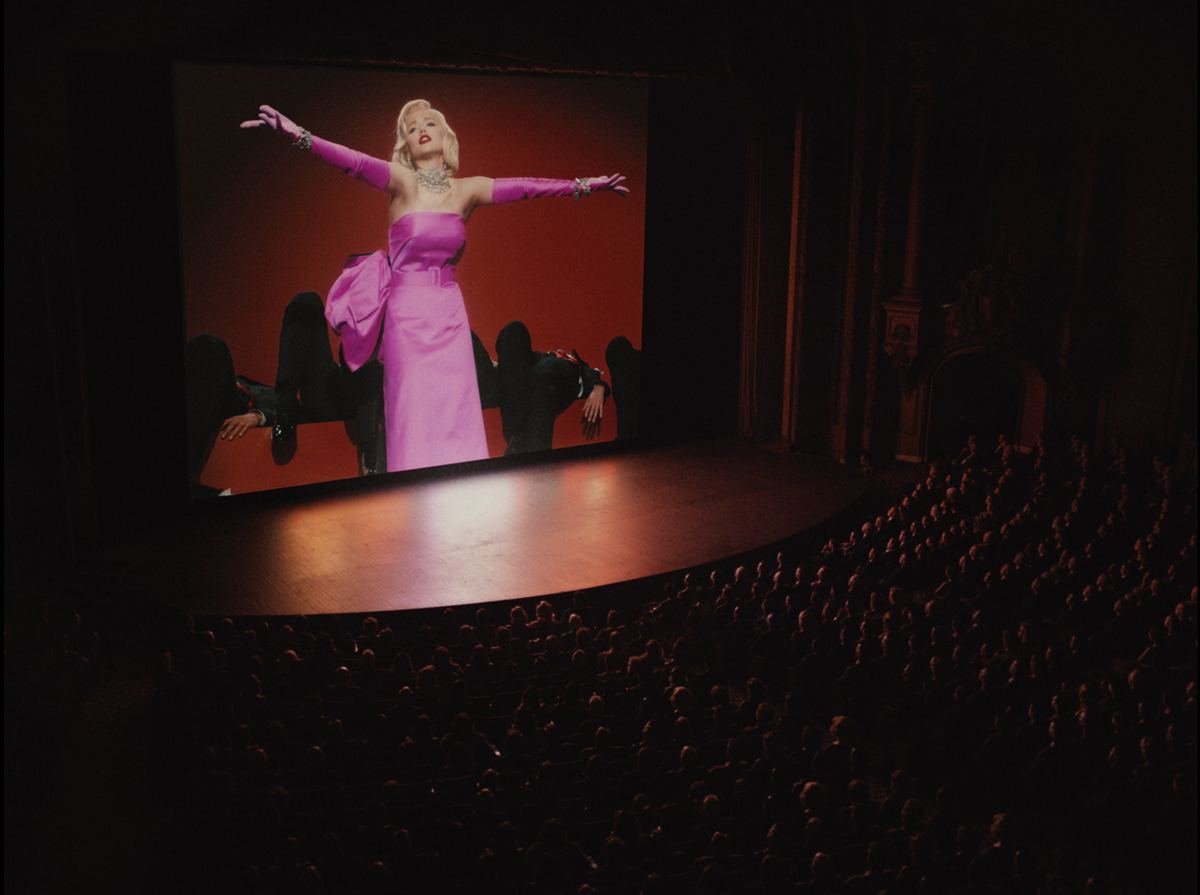
Ana de Armas as Marilyn Monroe in Blonde. Courtesy Netflix.
The uncanny valley wrought by Blonde’s painstaking, futile replications, though, never matches the revulsion provoked by Dominik’s own interventions to quite literally get inside his subject. Blonde is ghoulishly obsessed with Monroe’s pregnancies and reproductive organs. Shots of floating fetuses fill the screen so often that I wondered whether Operation Rescue had invested in the film. As a physician adjusts a speculum before performing an abortion, we peer down Monroe’s vaginal walls.
Only once does Blonde attempt to show Monroe’s genius as a performer, the magic she created when the cameras were rolling. At a screen test for the 1952 noir Don’t Bother to Knock, she stupefies the assembled movie men by burrowing deeply into her character’s fractured psyche. The segment calls to mind Betty Elms’s stunning audition sequence in David Lynch’s Mulholland Drive (2001). Coincidentally, in the late ’80s, Lynch, whose oeuvre is defined by totemic blondes, had tried to make a film about Monroe. That feature was ultimately abandoned, but the legend lived on in his work. “You could say that Laura Palmer”—the tragic heroine of Twin Peaks—“is Marilyn Monroe, and that Mulholland Drive is about Marilyn Monroe, too. Everything is about Marilyn Monroe,” Lynch notes in the 2018 book Room to Dream. Even when approaching her obliquely, Lynch’s movies and TV shows have done more to grapple with the complexities and contradictions of Monroe than nearly any other project devoted to her. Certainly more than Dominik’s film, in which everything is actually about Marilyn Monroe—an everything that amounts to nothing.
Melissa Anderson is the film editor of 4Columns and the author of a monograph on David Lynch’s Inland Empire from Fireflies Press.